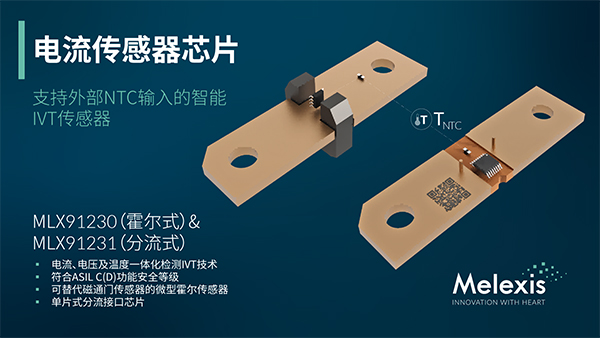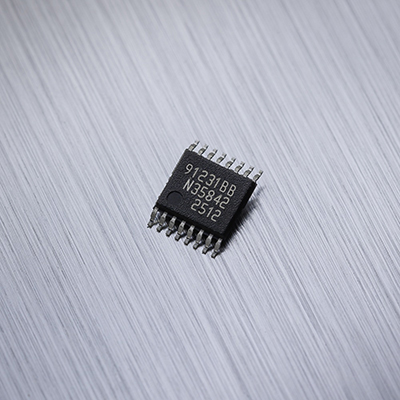Melexis, a global microelectronics engineering company, announced an upgrade to its intelligent IVT (current, voltage, and temperature) sensing platform, adding negative temperature coefficient (NTC) resistor input functionality to the MLX91230 (Hall effect) and MLX91231 (shunt interface) sensors. This upgrade enables engineers to measure external temperature more accurately based on existing junction temperature readings, thereby meeting the comprehensive monitoring requirements in safety critical applications.

Integrating NTC input into the MLX91230 and MLX91231 sensors significantly enhances the system's ability to detect temperature changes. For the MLX91231 (shunt interface) sensor, this feature also provides an additional application scenario that can compensate for residual differences in shunt resistance caused by temperature changes, further improving the accuracy of current detection. In addition, the new NTC input complies with the ASIL C standard and can be applied in critical areas of automotive safety, such as automotive batteries, DC fast charging, intelligent thermal fuses, and power distribution modules.

The new NTC input pin allows engineers to monitor the temperature of external components and perform post-processing using the same chip that performs current detection. This extended feature allows current, voltage, and temperature based on junction temperature and external NTC to be measured through a single device, which helps simplify the development process and improve system reliability. In addition, ASIL C functional safety certification compliant with ISO 26262 standard is applicable for current, voltage, and external NTC measurements, as well as diagnosable overcurrent detection (OCD). OCD can also be directly input into the thermal fuse driver, enabling intelligent thermal fuses to be easily deployed with fewer components.
These new features further enhance the already rich functionality of the MLX91230 and MLX91231 sensors. Each chip is equipped with an MCU with flash memory, which facilitates the deployment of customized software and can effectively compensate for system deviations. In addition, the LIN output option supports simple integration with 12V battery applications and power distribution modules, while the UART interface supports direct communication with the increasingly popular Battery Management System (BMS) in Battery Disconnect Units (BDUs). For remote BMS systems, UART over CAN can utilize a more robust physical layer for communication while maintaining the lower upper layer resource requirements advantage of point-to-point communication between current sensor modules and BMS.
In addition to vehicle applications, the extended functions of the new MLX91230 and MLX91231 are also applicable to various high and low voltage battery solutions, including battery energy storage systems (BESS), solar panel devices, and electric bicycles, providing precise temperature monitoring support for better system management.
Through these new features, Mindray continues to build a comprehensive battery application product portfolio, reflecting our long-term focus on this market, "said Bruno Boury, Product Line Director at Mindray." As miniaturization, fast charging, and more demanding application scenarios push the system towards thermal limits, temperature has become a key variable. The newly added NTC input on MLX91230 and MLX91231 can provide additional temperature data points in environments with significant thermal gradients and support shunt resistor DMC (data matrix code) compensation, enabling more accurate current detection. ”
MLX91230 and MLX91231 are now widely available. For more information, please visit www.delexis.com/MLX91230 or www.delexis.com/MLX91231.



